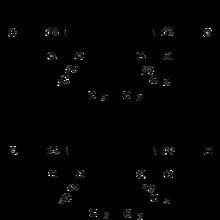Formula C12H23NO3 | Molar mass 229.3 g/mol | |
 | ||
Icaridin, also known as picaridin, KBR 3023, under the INCI name hydroxyethyl isobutyl piperidine carboxylate, and the trade names Bayrepel and Saltidin, is an insect repellent. It has broad efficacy against various insects and is almost colorless and odorless.
Contents
The name picaridin was proposed as an International Nonproprietary Name (INN) to the World Health Organization (WHO), but the official name that has been approved by the WHO is icaridin. The compound was developed by the German chemical company Bayer and was given the name Bayrepel. In 2005, Lanxess AG and its subsidiary Saltigo GmbH were spun off from Bayer and the product was renamed Saltidin in 2008.
Empirical findings
Icaridin has been reported to be as effective as DEET without the irritation associated with DEET. According to the WHO, icaridin “demonstrates excellent repellent properties comparable to, and often superior to, those of the standard DEET.” In the United States, the Centers for Disease Control and Prevention recommends using repellents based on Icaridin, DEET, IR3535, or oil of lemon eucalyptus (containing p-menthane-3,8-diol, PMD) for effective protection against mosquitoes that carry the West Nile virus, Eastern Equine Encephalitis and other illnesses.
Icaridin does not dissolve plastics.
Icaridin-based products, first used in Europe in 2001, have been evaluated by Consumer Reports in 2016 as among the most effective insect repellents when used at a 20% concentration. Icaridin was earlier reported to be effective by Consumer Reports (7% solution) and the Australian Army (20% solution). Consumer Reports retests in 2006 gave as result that a 7% solution of icaridin offered little or no protection against Aedes mosquitoes (vector of dengue fever) and a protection time of about 2.5 hours against Culex (vector of West Nile virus), while a 15% solution was good for about one hour against Aedes and 4.8 hours against Culex.
Chemistry
Icaridin contains two stereocenters: one where the hydroxyethyl chain attaches to the ring, and one where the sec-butyl attaches to the oxygen of the carbamate. The commercial material contains a mixture of all four stereoisomers.
Commercial products
Commercial products containing icaridin include Cutter Advanced, Skin So Soft Bug Guard Plus, Autan, Smidge and MOK.O.
Mechanism
A potential odorant receptor•co-receptor of Ιcaridin (and DEET), the CquiOR136•CquiOrco, has been suggested recently for Culex quinquefasciatus mosquito.
Recent crystal and solution studies showed that Icaridin binds to Anopheles gambiae odorant binding protein 1 (AgamOBP1). The crystal structure of AgamOBP1•Icaridin complex (PDB: 5EL2) revealed that Icaridin binds to the DEET-binding site in two distinct orientations and also to a second binding site (sIC-binding site) located at the C-terminal region of the AgamOBP1.
